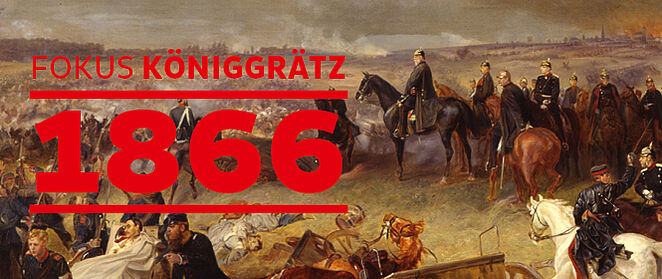Focus Königgrätz
Special presentation in the permanent exhibition

50 years ago, on 3 July 1866, Germany’s future was decided in the Battle of Königgrätz. The victory of the Prussian army over Austria established Prussian hegemony in the German states. The Deutsches Historisches Museum is devoting a temporary presentation within the Permanent Exhibition to this important event in German history with a number of objects from the museum’s own collections that can be seen for the first time.
The painting “The Battle of Königgrätz on 3 July 1866” by Georg Bleibtreu from around 1869 forms the centrepiece of the exhibition. In addition, two laurel wreaths as well as such contemporary objects as a uniform worn at the Battle of Königgrätz, a diary, a field post letter and examples of the new Prussian weapons technology are shown. A media station that demonstrates the course of events on 3 July 1866 and a time beam on the floor help to reconstruct the political developments before and after the battle.
The armies of Prussia and Austria faced each other near the northern Bohemian city of Königgrätz (now Hradec Králové, Czech Republic). With considerably more than 400,000 combatants and over 50,000 fallen and wounded, it was the one of the gravest mass slaughters of the 19th century; Prussia was able to decide the battle within a single day. The reasons for the victory at Königgrätz cannot only be found in the superiority of the Prussian weapons technology and the use of railways and telegraphy. The progressive nature of the Prussian military organisation in contrast to the difficulties on the Austrian side was of immense significance for the outcome of the battle. The assertion of the “primacy of politics” over the military and the monarchies quickly led to a peace treaty. The Peace of Prague of 23 August 1866 stipulated the terms for Prussia’s victory over Austria and brought an end to Austrian influence on German politics.
Flyer of the exhibition